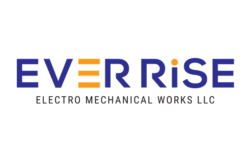In the competitive world of MEP (Mechanical, Electrical, and Plumbing) contracting, controlling costs while maintaining high standards of service and quality is essential for success. With rising material prices, labor costs, and project timelines, finding innovative cost-saving strategies has become a priority for MEP contractors. Implementing smart, practical strategies can reduce expenses, increase profitability, and ensure the smooth completion of projects. Here are some proven cost-saving strategies in MEP contracting that can help streamline operations and optimize overall expenditure.
1. Effective Project Planning and Design
A well-thought-out project plan is one of the best ways to save costs before work even begins. The design phase, in particular, plays a critical role in determining the overall budget. By thoroughly reviewing and refining the designs for energy efficiency, optimized layouts, and system integration, MEP contractors can minimize material waste and reduce future operational costs.
Tips:
- Use Building Information Modeling (BIM) to visualize and simulate the design process, which can help spot design flaws and reduce costly changes later in the project.
- Ensure all MEP systems are aligned and work together efficiently from the outset to avoid costly adjustments during installation.
2. Utilize Prefabrication and Modularization
Prefabrication and modular construction techniques involve assembling parts of the MEP systems offsite before transporting them to the project site. These methods can reduce labor costs, decrease installation time, and reduce the risk of errors. Prefabricated components also improve the overall quality of the MEP systems since they are built in controlled factory conditions.
Benefits of Prefabrication:
- Faster installation times, leading to reduced labor and equipment costs.
- Increased accuracy and quality control, minimizing the need for on-site revisions.
- Less material wastage compared to traditional installation methods.
3. Select Energy-Efficient Systems
Energy-efficient MEP systems, while sometimes more expensive upfront, can lead to significant long-term savings in operating costs. Contractors should recommend energy-efficient systems that not only align with the client’s sustainability goals but also provide cost savings over the life of the building.
Strategies:
- Install LED lighting and energy-efficient HVAC systems that require less maintenance and consume less energy.
- Use smart thermostats and controls that allow for real-time adjustments to energy consumption, optimizing utility costs.
4. Streamline Labor Management
Labor costs are a substantial portion of MEP contracting expenses. Efficiently managing labor schedules, tracking time, and reducing downtime can help significantly lower costs. Consider using workforce management software to schedule tasks and monitor performance in real-time.
Labor Cost-saving Tips:
- Cross-train workers to increase versatility and ensure the right skills are available at all times.
- Plan work in phases and allocate labor according to project needs to avoid overstaffing during slow periods.
5. Negotiate Bulk Purchases and Long-Term Supplier Relationships
Building strong relationships with suppliers can help secure better pricing and ensure material availability. Bulk purchasing and negotiating long-term contracts can lead to discounts and lower unit costs, helping MEP contractors reduce their overall material expenses.
Supplier Collaboration:
- Establishing strong communication with suppliers ensures faster delivery of materials, avoiding delays that may lead to additional costs.
- Regularly review supply chain operations to identify cost-effective alternatives without compromising quality.
6. Embrace Technology for Improved Efficiency
The use of advanced technologies can dramatically reduce costs in MEP contracting. From project management software to field tools like mobile apps, technology helps contractors stay organized and improve efficiency.
Tech Solutions for Cost Savings:
- Utilize project management tools to streamline communication, track expenses, and ensure deadlines are met.
- Use on-site mobile apps to record data quickly and monitor progress in real time, improving the speed and accuracy of work done.
7. Effective Waste Management
Material waste can accumulate quickly on MEP contracting projects, leading to increased costs. By managing waste more effectively, contractors can lower disposal costs and prevent unnecessary purchases of materials.
Waste Reduction Strategies:
- Recycle or reuse materials whenever possible to reduce waste and keep material costs down.
- Monitor materials closely during transportation and storage to ensure that they’re not damaged before installation.
8. Focus on Preventative Maintenance
While this strategy focuses more on long-term cost savings for clients, MEP contractors can benefit from offering preventative maintenance services. By emphasizing system longevity and efficient operation, contractors can build a reputation for providing high-quality, value-driven services.
Preventative Maintenance Benefits:
- Reduces the likelihood of expensive repairs or system failures in the future.
- Helps clients save money on utility bills and maintenance costs by ensuring their systems operate efficiently.
Conclusion
By adopting these cost-saving strategies, MEP contractors can stay competitive, increase profit margins, and deliver high-quality services to their clients. Careful planning, efficient labor management, energy-efficient systems, and the use of modern technology can all contribute to lowering costs while ensuring that project quality remains high. As the construction industry continues to evolve, MEP contractors who integrate these strategies into their operations will be better equipped to navigate financial challenges and secure long-term success.
